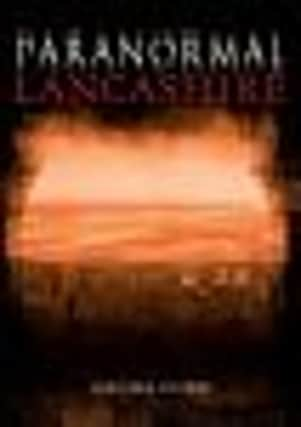Book review: Paranormal Lancashire by Daniel Codd


In fact, they’re more likely to be ‘boggarts,’ ‘dobbies,’ and ‘barguests’ to those who have dabbled in the folklore of a county steeped in witchcraft and paranormal mysteries.
Preston author Joseph Delaney has found rich pickings in Lancashire’s ghostly heritage in his best-selling children’s book series The Wardstone Chronicles which feature master Spook John Gregory battling supernatural forces in the county’s rural landscape.
Advertisement
Hide AdAdvertisement
Hide AdAnd now author Daniel Codd has roamed the same highways, byways and ghoulish graveyards to dig up some of the most hair-raising tales in his entertaining new book, Paranormal Lancashire.
There’s a vicar who saw his own ghost, a church that mysteriously moved itself to a new site, a witch who turned herself into animals and the theatre haunted by a famous Georgian actress.
Perhaps the most spine-tingling story involves the 19th century vicar of St Leonard’s Church at Walton-le-Dale, near Preston, who was reputed to dabble in the black arts.
The clergyman waited in the church porch on Christmas Eve when it was said the spirits of those destined to die in the coming year passed into the church. Imagine his shock when he saw his own ghost drift by... and the shock for all concerned when he breathed his last only months later.
Advertisement
Hide AdAdvertisement
Hide Ad‘Moving churches’ was a common legend in Lancashire and perhaps the most notable of these was the Parish Church of St Andrew in Church Road, Leyland, which was originally built at nearby Whittle-le-Woods but on the night of its completion around 1849 was reported by witnesses to have been moved in its entirety to its current site by ‘a huge cat, with unearthly-looking eyes, and a tail with a barbed end.’
Back in the 17th century, a woman known as Meg Shelton and commonly remembered as the ‘Hag of the Fylde’ was blamed for stealing milk, running rings round the local squire and turning herself into animals and even a sack of wheat in the Woodplumpton, Kirkham and Wesham areas.
When she died in 1705, she was buried at St Anne’s Church in Woodplumpton, near Preston, but had to be frequently re-interred when her body appeared on the grass. Her spirit was eventually exorcised but a huge boulder, which can still be seen today, was hauled over her grave to ensure she stayed six feet under.
Not all ghosts confined themselves to the countryside. In 1877, engineers reported the sound of ‘unearthly moaning and groaning’ in a large railway shed at Chorley railway station followed by a hail of large stones hurled at the workmen. It was blamed on a ‘shocking suicide’ close to the haunted shed a few months earlier.
Advertisement
Hide AdAdvertisement
Hide AdAnd the headless ghost of a youth ‘clankin’ round in chains’ often stalked the streets of Preston in the early 19th century. It sometimes appeared as a great black dog or a strange woman but it was always headless.
Many of the county’s castles and ancient halls, including at Clitheroe and Lancaster, have been troubled by strange apparitions, usually ‘white ladies,’ but theatres have also had their fair share. At the Grand Theatre at Lancaster, the ghost of 18th century star actress Sarah Siddons has been seen ‘floating down the aisle.’
Today ghost hunting is big business in Lancashire and there are regular ‘walks’ and ‘sleepovers’ at various locations so if you should happen to meet an unwelcome ‘visitor,’ remember to spit three times in the ghost’s face, turn a live coal on the fire, nail a horseshoe to the doorframe or pick a few sprigs from a wicken tree.
At least one of the antidotes should save you from a fate worse than death!
(Amberley, paperback, £12.99)